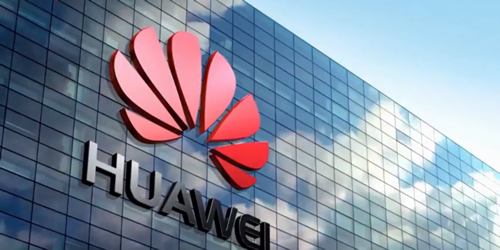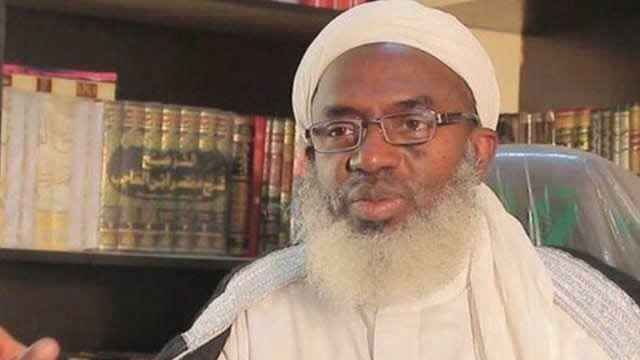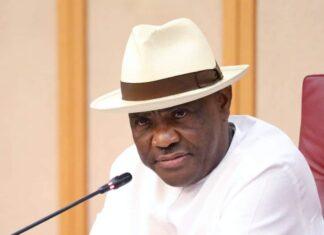In the last few years, Chinese technology firm Huawei Technology has grown beyond imagination. Associate Editor OLUKOREDE YISHAU (just back from Shenzhen, China) tells the story of this multi-billion dollars company, which has overtaken Apple as the number two in Smartphones’ sales globally.
Divided into four areas and 12 blocks, Huawei Ox Horn Campus sits on 1.4 million square metres of land. It houses 108 buildings. In these buildings, 25,000 research and development employees pry into the future of telecommunications. The employees and visitors get around the massive premises through a rail system which stretches into 7.8 kilometres. Beauty and history are on display in this campus not far away from Shenzhen, the home of Huawei Technology— the multi-billion dollars Chinese company rated as number two ahead of Apple in Smartphone sales around the world.
Its statistics are awe-inspiring: It has shipped over 200 million Smartphones across the world; it is involved in over 30 fifth-generation (5G) commercial contracts and over 40,0005G site shipments; 211 companies in Fortune Global 500 have chosen it as their digital transformation partner and over 160 cloud services are available on Huawei Cloud. Also, between 2008 and last year, the company invested $75 billion on research and development.
Rome wasn’t built in a day
Speaking at the executive briefing room in Shenzhen last Tuesday, Brian Chamberlin of Huawei’s Consultant’s Office traced the success of the company to China’s telecommunications reforms.
The road to the telecommunications reforms started in 1980, which marked the end of two decades of hardship and internal conflict in China. This conflict left China undeveloped. Its little infrastructure was destroyed. According to the World Bank, China only had a telephone penetration rate of 0.22%, which was one of the lowest rates in the world at the time. For 20 years then, telephone lines were restricted only to senior government officials. This, according to the World Bank, was also at a time when the poverty rate was 88% and the number of registered vehicles stood at 365,000.
But changes began to happen when in May 1980, Shenzhen was declared a Special Economic Zone (SEZ). As a way of encouraging investment in the zone, the government removed restrictions on foreign investment, simplified the rules for opening a business, permitted leasing land, allowed people to be paid different rates based on what they produced and a year later, Shenzhen was like a construction site.
Chamberlin added: “In 1981, the central government recognized that China’s underdeveloped telecommunications was a serious bottleneck for their national development. They estimated that telecommunications investment would be 15 times more effective in driving economic development than other infrastructure development.
“Increase investment in telecommunications to 4.2B RMB. This was enough to install 1.37 million new phone lines.
“They allowed local MPT agencies to set the installation price for phone lines based on the actual cost plus profit. This change provided critical additional capital to fund infrastructure growth.
“They allowed the MPT to keep 90% of the profits they earn and encouraged these profits to be invested in building up the infrastructure.
“They change the rules for MPT salaries so that regional directors could only increase their pay by adding more customers.
“They lowered tariffs and removed import restrictions on foreign telecommunication equipment. The adjusted the accounting rules to encourage investments in telecommunications projects.”
The birth of Huawei
Chamberlin said in 1987, Mr. Ren Zhengfei, the founder of Huawei, raised 21,000 RMB, about $3,500, to establish the company in Shenzhen, adding that Zhengfei began as a Mitel PBX agent.
“He seized the historical opportunities brought by China’s reform and opening and the rapid development of the global ICT industry, has grown steadily into a company with annual sales volume more than $100 billion,” he said.
In the early days when the market in the larger cities was saturated with big western vendors and Chinese state-owned companies such as ZTE, Datang and Great Dragon, Huawei concentrated on rural markets.
“The company was fairly successful with this strategy, growing to about 20 employees by 1990 and about 100M CNY in revenue in 1993 (roughly $17 million)
“Mr. Ren recognised that if the company ever became too successful, their competition could kill the company by blocking their access to the equipment they re-sold. To avoid this fate, he began an R&D programme in 1991.
“This was a “burn the bridges” move. Huawei invested all of its capital into the R&D effort. Huawei also started issuing “share” to employees, because it didn’t have enough cash to pay competitive salaries. In 1991, the team consisted of 50 R&D Engineers, virtually all recent university graduates. By 1993, Huawei had grown to 400 employees. In July 1994, Huawei launched the C&C08, their first digital switch with a 2,000 line capacity but an architecture that can support up to 400,000 lines allow us to grow capacity quickly,” Chamberlin explained.
The second phase
Its second phase took off in 1994. That was the end of its life as a trading company and the beginning of its life as a telecom vendor. It began this era selling equipment whose quality was not high “and the products would often break but when they did, Huawei people were available around the clock to get it working again”.
Chamberlin added: “Customer report that at the time when things went wrong the Western vendors would argue with the customer. Huawei would just take the criticism, apologise, and get the systems working again as quickly as possible. Customers in remote areas were not used to this level of service and loved it.
“The level of service also allowed Huawei to see the customers’ problems 1st head. For example, in rural systems, rats would frequently chew through cables causing outages. Instead of blaming the customer as the Western did, Huawei started to deliver products with “rat proof” cables.
“Huawei also took the criticism to heart and began to work in earnest on the quality of our products. Within a few years, our equipment was on par with any Western vendor.
“Around 1992, the MPT launched a Universal Coverage program to expand rural phone lines and made a few other adjustments that dramatically increase the number of new lines installed. These changed played directly into Huawei key strengths.”
From 100M RMB to 1.5B RMB ($180million) in 3 years
Between 1997 and2003, Huawei, according to Chamberlin, expanded into optical networking and into
mobile networks. In 1997, it launched fixed network solutions, and shortly afterwards a GSM mobile solution.
“By this stage, the quality of Huawei’s products had improved enough that is was able to compete with foreign competitors in China’s big cities, and to start expanding internationally. In 1998, we won our first contract in an urban city in China.
“This period is also when Huawei stated to expand internationally. Offices were opened in Bangalore (1999) and Stockholm (2000). Continuing with the strategy of initially targeting lesser developed markets, Huawei won International contracts in Hong Kong, Russia, Thailand and South Africa.
“During this period, Huawei also engaged with Western consulting companies, especially IBM, to learn from the West how to be a global company.
“Huawei’s plans again aligned perfectly with China’s development plans. During this period, China deployed 1.6M KM of fiber. China Mobile added 220 Million new mobile customers.
“Revenue grew to $3.8B US in 2003 (20x growth in 7 years). Of this, more than $500 Million was from international markets,” Chamberlin said.
The 3G/4G era
In 2004, Huawei won its first European contract with the Dutch carrier Telfort (now known as KPN) to deliver a nationwide 3G network. That same year, it developed its first mobile phone and a year later, it won a contract with BT to deliver a fixed line network. It also became a preferred supplier for Vodafone.
Significantly, 2005 was the year the company’s international revenues started exceeding its China earnings. And by 2007, Huawei became a top supplier for all the leading operators in Europe.
Smartphones’ era
2009 was a year of a quantum leap for the company because of its launch of the world’s first LTE network with TeliaSonera in Norway. A year later, it opened its first Cyber Security Centre in the UK and the following year, Huawei expanded into the enterprise space with the establishment of the Enterprise Business Group. In 2015, Huawei deployed over 400 LTE (4G) networks covering 140 of the world’s capitals and its Smartphone shipments peaked at 100 million worldwide.
Chamberlin explained that “Huawei has a sound and effective corporate governance system. Shareholding employees elect 115 representatives to form the Representatives’ Commission. This Representatives’ Commission elects the Chairman of the Board and the remaining 16 board directors. The Board of Directors elects four deputy chairs and three executive directors. Three deputy chairs take turns serving as the company’s rotating chairman.”
It has 96,768 Shareholding employees, while the founder holds 1.14 %of the shares
The American challenge
But left to the United States, Huawei’s 5G technology will not be deployed around the world. It is mobilising its allies not to use the technology on the premises that it will be used to spy on them. Huawei, the world’s largest maker of telecom equipment, has witnessed the United States prohibiting its agencies and contractors from buying Huawei equipment. But over 30 countries have awarded Huawei contracts to build its next-generation infrastructure.
Some weeks back, serving and past Pentagon leaders warned about the risks to future military operations posed by allies in Europe and Asia using Chinese technology in their 5G wireless telecommunications networks pioneered by Huawei, a Chinese firm.
In a statement, they said: “While our concern is for future operations, the time for action is now,” said the leaders, who include retired Adm. James Stavridis and retired Gen. Philip Breedlove, the two most recent commanders of NATO and U.S. European Command; retired Adm. Samuel Locklear III, former head of U.S. Pacific Command; and a former director of national intelligence retired Lt. Gen. James R. Clapper Jr.
“As military leaders who have commanded U.S. and allied troops around the world, we have grave concerns about a future where a Chinese-developed 5G network is widely adopted among our allies and partners.’’
But their intervention came at a time the United States President Donald Trump’s move against the telecommunications giant suffered a major setback. But many European nations are unwilling to join Trump’s clamour for the boycott of Huawei’s fifth-generation, or 5G, wireless networks.
Trump had argued that Huawei was a significant security threat. But the European countries he was banking on to break Huawei’s back believe the threat can be managed. They also seem to believe Huawei’s statement that it had no plan of using its technology to spy on the world on behalf of the Chinese government.
Zhengfei accused the United States of having political motivations in leveling criminal charges against the company.
A Washington Post report said Trump’s move stumbled because some of America’s closest allies rejected it. Britain, Germany, India and the United Arab Emirates are among the countries that have given signs they might not back the American effort to stop Huawei’s 5G networks. Though Britain shares the United States’ concerns, the security risks, said its officials, would be managed by scrutinising the company and its software.
Mike Rogers, a Huawei critic and former Republican congressman who led the House Intelligence Committee, said: “It is looking dicey. We are running out of runway.”
European wireless networks depend largely on Huawei. Vodafone and Deutsche Telekom use Huawei’s equipment, making a widespread ban difficult.
Caroline Nagtegaal, a member of European Parliament from the Netherlands, said: “I’m not sure a ban is a solution. We have to be very careful making a step like that.”
“We’ve not seen any evidence of backdoors into the network,” said Vodafone’s most senior lawyer in the U.K. “If the Americans have evidence, please put it out on the table.”
Huawei’s profits rose by 25 percent. Its 2018 profits stand at $8.8 billion. It shipped 206 million smartphones last year and sales were up 45 percent compared with 2017.
Guo Ping, the chairman of Huawei, told reporters while releasing the results that: “The U.S. government has got a loser’s attitude. They want to smear Huawei because they can’t compete with us.”
In a piece for the Financial Times in March, Guo said the United States was opposed to Huawei because the more its equipment was installed around the world, the more it “hampers the U.S. efforts to spy on whomever it wants.”
In a recent editorial, The Washington Post said: “In a recent newspaper advertisement, the Chinese telecommunications giant Huawei appealed to common sense. The company, which just announced a banner year with more than $100 billion in revenue, makes smartphones, as well as equipment for the forthcoming 5G ultra-fast networks. It has long been viewed by the U.S. government as a security risk because of ties to China’s government. In the ad, published in the Wall Street Journal, the company lamented ‘misunderstandings’ about it and insisted, “Don’t believe everything you hear.”
Also, PC Magazine, in a report, said: “Huawei has been on a seemingly unstoppable path to becoming a world leader not just in smartphone production but also in the implementation of 5G. Though the company is now facing bans in the United States, Australia, and Japan and could soon face similar restrictions in Canada, India, and other countries, the backlash is not threatening to diminish its dominance, so far. In fact, Huawei remains the largest producer of telecommunications equipment and posted $100 billion in revenue for 2018 and record sales of its smartphones.
“Whether the allegations against Huawei are correct or not, the United States is coming to terms with the company’s role in telecommunications worldwide as it has been unable to get allies in Europe and other countries to institute bans.”
Annual report
Huawei’s Annual Report said the company has “made cybersecurity and privacy protection our top priorities since 2018. Over the past three decades, we have worked closely with our carrier customers to build over 1,500 networks in more than 170 countries and regions. Together, we have connected more than three billion people around the world, and we have maintained a solid track record in security throughout.”
The company said in 2018, it launched the industry’s first full range of 5G end-to-end commercial products and solutions that comply with 3GPP standards. “In addition, we conducted 5G tests with 182 carriers worldwide, signed more than 30 commercial contracts for 5G, and shipped more than 40,000 5G base stations to markets around the world,” it added.
It said it would rather shut down the company than do anything to violate customers’ trust. (The Nation)

























